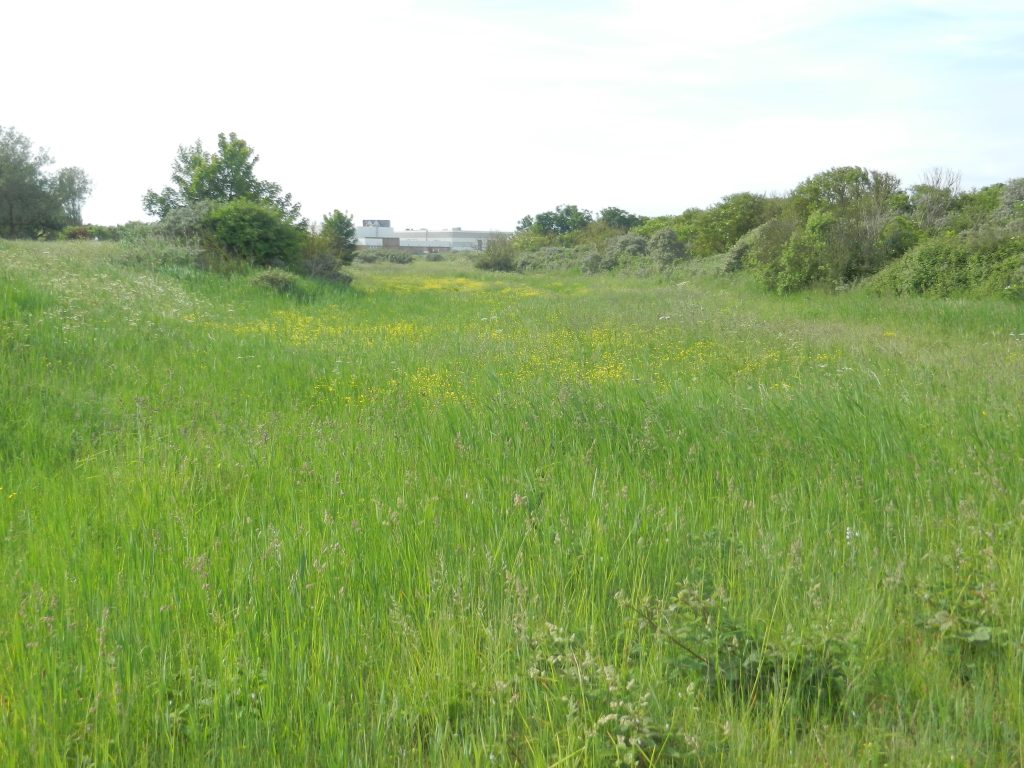
The above photo shows the linear lowland between the two naturally occuring ranges of vegetated sand dunes, as viewed north with Cleethorpes Leisure Centre in the distance (s.p.b.). The flora in the lowland is non-saline whereas that of the dune ranges is dominated by wind and salt resistant species. The concrete footpath (s.p.b.) is off picture to the left at about the same height as the middle of the parallel sand dunes, beyond that the coastal area is at about sea-level. At the time of writing an embrionic third linear dune range is developing by natural accretion seaward of the right-hand dune in the photo, and the very earliest patches of vegetation are beginning to get a foot-hold.
Until the coming of the railway in the late 1840s ‘Thorpe’ was a site of little more than fishermen’s huts. Cleethorpes is a seaside resort of the railway age with a station, still the final stop for the train from Barton and the Trans-Pennine trains, right next to the promenade. The village was a mile inland, still well worth a visit with its estate cottages and fine parish church incorporating Anglo-Saxon features. It has now been surrounded by suburban sprawl.